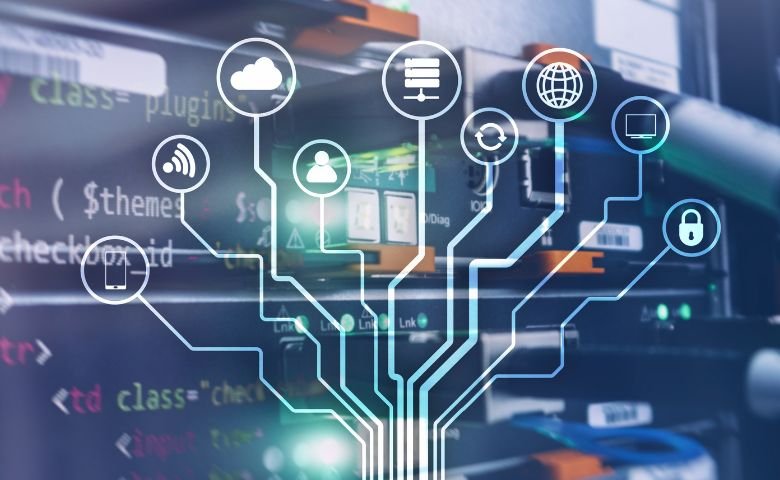- TV
How to Get Premium Channels with Your Cable TV Bundle?
Access to exclusive entertainment content is a priority for many viewers seeking a richer television experience. Premium chan...
Explore More
There has been a dramatic shift in how we engage with technology and our physical environment due to the proliferation of Internet-of-Things (IoT) devices. These internet-enabled gadgets, which are rife with sensors, allow for frictionless data interchange and communication, automating and streamlining many facets of everyday life.
Internet of Things (IoT) devices differ from conventional devices in several important ways. The primary capability of the Internet of Things is its connection. The ability to remotely monitor, control, and exchange data is made possible by these devices' internet connectivity and their ability to interface with other systems and devices. Second, sensors and actuators are built into IoT devices, allowing them to gather data from their surroundings and operate accordingly. Environmental monitoring and smart home automation are only two examples of the many potential uses made possible by this capacity. As a last point, many IoT devices can process and analyze data locally or in the cloud, which allows for decisions and insights to be made in real-time.
Internet of Things (IoT) gadgets have become ubiquitous, improving many parts of people's lives with their exceptional usefulness and efficiency. Internet of Things (IoT) gadgets like thermostats, smart lighting systems, and security cameras provide smart homes convenience and peace of mind by letting users manage and monitor their surroundings from afar. People can monitor their vitals and remain in touch wherever they go with the help of wearable gadgets like smartwatches and fitness trackers. Additionally, transportation, healthcare, and agriculture are just a few sectors that benefit from optimizing and improving processes made possible by Internet of the Things devices.
Although there are many advantages to using IoT devices, there are also major privacy and security risks. Internet of Things (IoT) devices are vulnerable to cyber assaults and data breaches because of their interconnection and continuous exposure to the Internet. Malicious actors may get unauthorized access, breach user privacy, or launch large-scale assaults by exploiting device firmware or software vulnerabilities. Concerns over user privacy and data protection are further heightened by the substantial personal data collected by IoT devices. In response to these worries, some governing organizations have introduced rules and guidelines to strengthen the privacy and security of IoT devices.
Many people are still hesitant to use IoT devices because of privacy and security concerns, but their many advantages more than make up for it. Enhanced efficiency and simplicity of use are one of the main advantages. Internet of Things (IoT) devices automate commonplace chores, such as controlling the temperature or shutting off the lights, saving consumers time and energy. Internet of Things (IoT) devices also facilitate data-driven decision-making by revealing real-time context and process details. One practical use of IoT sensors is in industrial settings, where they can track equipment performance and anticipate maintenance requirements. This helps to maximize production and save downtime. By improving healthcare monitoring, energy economy, and safety and security, IoT devices contribute to a better quality of life.
Despite their promise, several restrictions and difficulties prevent IoT devices from being widely used and successful. Difficulty achieving seamless integration and compatibility arises from interoperability concerns caused by the diversity of IoT devices and communication protocols. As an added complication, users and organizations may find the setup, configuration, and administration of IoT ecosystems simple. Furthermore, smaller organizations or individuals may be discouraged from adopting due to financial concerns, such as the initial investment and continuing maintenance expenses.
Looking forward, the proliferation and innovation of IoT devices will continue. With the help of new technologies like edge computing and artificial intelligence (AI), Internet of Things (IoT) devices will soon be able to make better, more autonomous decisions right at the network's periphery. The Internet of Things (IoT) benefits greatly from the increased bandwidth, decreased latency, and improved connection that will be made possible by the widespread deployment of 5G networks. The growing integration of IoT ecosystems with smart cities, autonomous cars, and linked infrastructure will bring a new age of interconnection and digital transformation.
In Conclusion, IoT devices are a game-changer for contemporary civilization since they provide new levels of connectedness, ease, and usefulness. Internet of Things (IoT) devices offer many advantages, such as better efficiency and a higher quality of life, but they also present some privacy and security concerns that need fixing. Individuals and organizations may make the most of the Internet of Things (IoT) devices' capabilities to foster innovation and build a smarter, more connected society by learning about their features, uses, and obstacles. Exciting new developments and expansion prospects await future Internet of Things (IoT) devices, thanks to the relentless march of technological progress.
Latest insights, tips, and updates from our experts.
Admin
Which Of The Following Is True Of Internet-Of-Things Devices